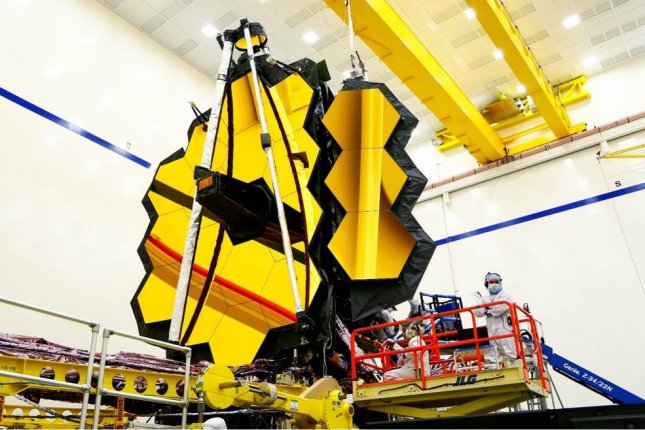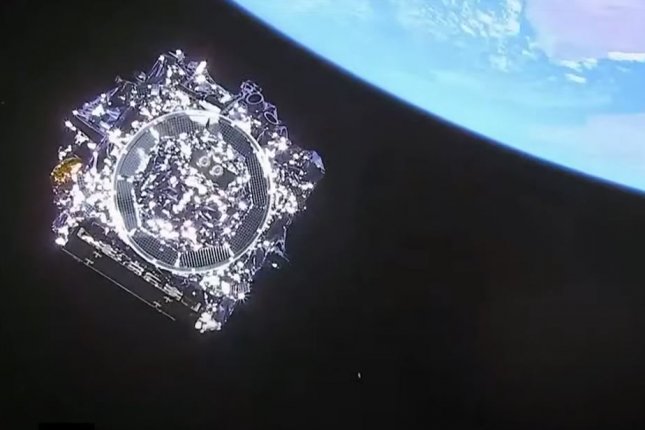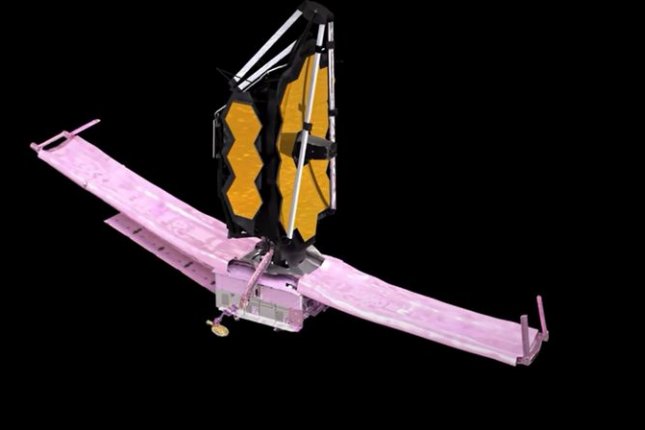
 NASA released the first image from the James Webb Space Telescope on March 16. File Photo courtesy of NASA
NASA released the first image from the James Webb Space Telescope on March 16. File Photo courtesy of NASA
The most powerful telescope ever launched into space was recently damaged by a small space rock hurtling through the solar system.
NASA made the announcement Wednesday, stating that the collision with the James Webb Space Telescope occurred between May 23 and May 25, adding that micrometeoroid strikes such as this are “unavoidable.
The dust-sized micrometeoroid hit one of the most crucial pieces of the telescope, one of the 18 gold-plated mirrors that gather light from the depths of the universe and reflect that light toward an instrument that collects the light.
“We always knew that Webb would have to weather the space environment,” said Paul Geithner, technical deputy project manager at NASA’s Goddard Space Flight Center.
The James Webb Space Telescope, which cost roughly $10 billion, was launched Dec. 25 and is not yet fully operational.
Despite the dinged mirror, scientists say that the telescope can still operate at full capacity.
“We designed and built Webb with performance margin — optical, thermal, electrical, mechanical — to ensure it can perform its ambitious science mission even after many years in space,” Geithner said.
An initial assessment found that the performance of the instruments still exceeds all mission requirements even with the cosmetic damage.
Flight teams on Earth have the ability to maneuver Webb to protect crucial instruments from well-known streams of debris, such as a meteor shower, but that was not the case with the late-May collision.
“This most recent hit was not a result of a meteor shower and is currently considered an unavoidable chance event,” NASA said in a press release.
Scientists say that the recent impact will not change the team’s operation schedule with the first full-color images from Webb scheduled to be released on July 12. This highly anticipated image is expected to be better than a test photo that the telescope captured in March of a star 2,000 light-years away from Earth while scientists were calibrating its mirrors.
Webb was built as a successor to the decades-old Hubble Space Telescope, which was sent into space on April 24, 1990.
The primary mirror of the newer telescope is 21 feet across, significantly larger than Hubble’s primary mirror, which is 7.9 feet across. This allows Webb to collect more light and get a better view of distant objects that Hubble may not even be able to detect.
However, unlike the Hubble, which orbits the Earth, Webb is floating at a special spot in space known as a Lagrange point nearly 1 million miles away from the planet. Being at this distance makes it virtually impossible for a crew to be sent into space to fix the telescope if technical issues or damage occur.
ESPAÑOL:
El telescopio James Webb de la NASA de $ 10 mil millones dañado por la roca espacial
 La NASA publicó la primera imagen del Telescopio Espacial James Webb el 16 de marzo. Foto de archivo cortesía de la NASA
La NASA publicó la primera imagen del Telescopio Espacial James Webb el 16 de marzo. Foto de archivo cortesía de la NASA
El telescopio más poderoso jamás lanzado al espacio fue dañado recientemente por una pequeña roca espacial que se precipita a través del sistema solar.
La NASA hizo el anuncio el miércoles, afirmando que la colisión con el Telescopio Espacial James Webb ocurrió entre el 23 y el 25 de mayo, y agregó que los ataques de micrometeoroides como este son “inevitables”.
El micrometeoroide del tamaño del polvo golpeó una de las piezas más cruciales del telescopio, uno de los 18 espejos chapados en oro que recogen la luz de las profundidades del universo y reflejan esa luz hacia un instrumento que recoge la luz.
“Siempre supimos que Webb tendría que capear el entorno espacial”, dijo Paul Geithner, subgerente técnico de proyectos en el Centro de Vuelo Espacial Goddard de la NASA.
El Telescopio Espacial James Webb, que costó aproximadamente $ 10 mil millones, fue lanzado el 25 de diciembre y aún no está completamente operativo.
A pesar del espejo picado, los científicos dicen que el telescopio aún puede operar a plena capacidad.
“Diseñamos y construimos Webb con margen de rendimiento (óptico, térmico, eléctrico, mecánico) para garantizar que pueda realizar su ambiciosa misión científica incluso después de muchos años en el espacio”, dijo Geithner.
Una evaluación inicial encontró que el rendimiento de los instrumentos aún excede todos los requisitos de la misión, incluso con el daño cosmético.
Los equipos de vuelo en la Tierra tienen la capacidad de maniobrar Webb para proteger instrumentos cruciales de corrientes conocidas de escombros, como una lluvia de meteoritos, pero ese no fue el caso con la colisión de finales de mayo.
“Este golpe más reciente no fue el resultado de una lluvia de meteoritos y actualmente se considera un evento casual inevitable”, dijo la NASA en un comunicado de prensa.
Los científicos dicen que el impacto reciente no cambiará el calendario de operaciones del equipo con las primeras imágenes a todo color de Webb programadas para ser lanzadas el 12 de julio. Se espera que esta imagen tan esperada sea mejor que una foto de prueba que el telescopio capturó en marzo de una estrella a 2.000 años luz de distancia de la Tierra mientras los científicos calibraban sus espejos.
Webb fue construido como sucesor del Telescopio Espacial Hubble de décadas de antigüedad, que fue enviado al espacio el 24 de abril de 1990.
El espejo primario del telescopio más nuevo tiene 21 pies de ancho, significativamente más grande que el espejo primario del Hubble, que tiene 7.9 pies de ancho. Esto permite a Webb recolectar más luz y obtener una mejor vista de objetos distantes que el Hubble ni siquiera puede detectar.
Sin embargo, a diferencia del Hubble, que orbita la Tierra, Webb está flotando en un punto especial en el espacio conocido como punto de Lagrange a casi 1 millón de millas del planeta. Estar a esta distancia hace que sea prácticamente imposible que una tripulación sea enviada al espacio para arreglar el telescopio si ocurren problemas técnicos o daños.















